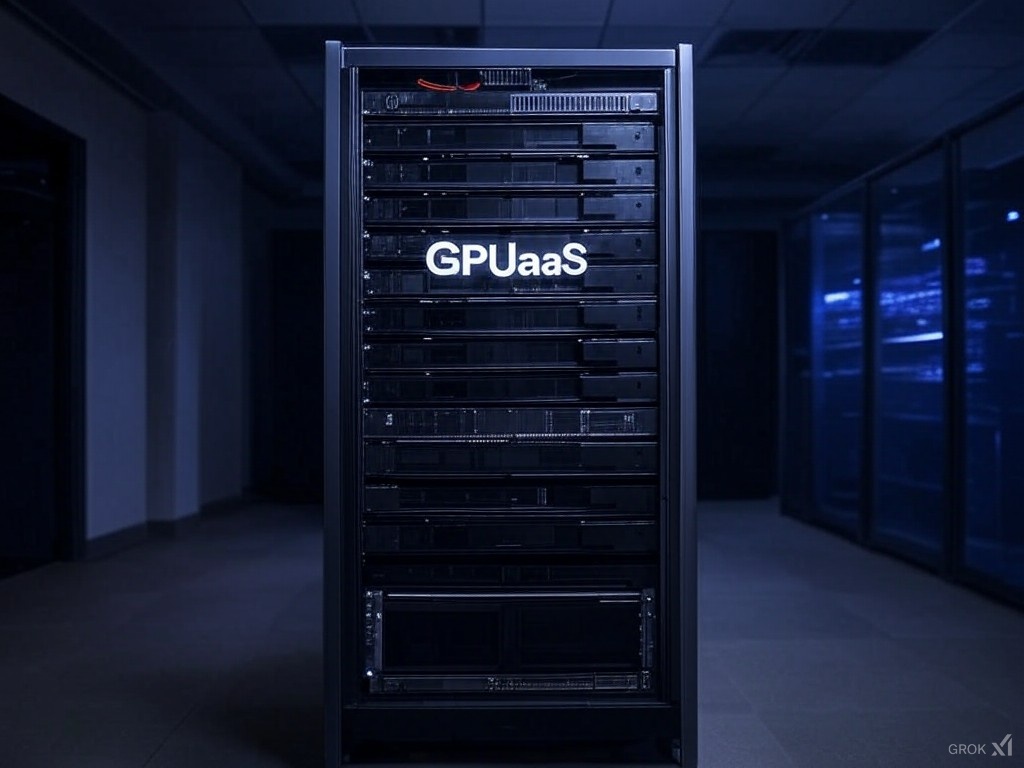The GPU as a Service market is booming, with platforms like Spheron Network promising to break the dominance of cloud giants by offering more affordable prices and a decentralized infrastructure.
With global cloud computing expenditure expected to reach $1.35 trillion by 2027, the adoption of cloud solutions continues to grow. In this context, renting GPUs in the cloud has become a key service, driven by the demand for AI projects, machine learning, and high-performance computing (HPC).
Forecasts indicate that the GPU as a Service (GPUaaS) market, valued at $3.23 billion in 2023, could hit $49.84 billion by 2032. This meteoric growth responds to the needs of training AI models, processing large data volumes, and running intensive computations.
But a crucial question arises: Is renting GPUs in the cloud truly cost-effective?
When to Choose Cloud GPUs
Renting cloud GPUs makes sense in specific cases, such as short-term projects, demand spikes, proof of concepts, or when avoiding initial hardware investments. It’s also an effective solution for reducing maintenance burden, as providers handle hardware updates, security, and cooling.
Another added value is democratized access: small companies, startups, and research teams can access high-performance GPUs without significant upfront investments.
Understanding the Real Cost of Renting
Beyond the hourly rate, renting GPUs in the cloud involves additional costs, including:
- Billing model: on-demand, reserved, or bare-metal instances. Reserved instances can offer discounts of up to 60% for prolonged workloads.
- GPU type: high-end GPUs like NVIDIA H100 or RTX 6000-ADA are significantly more expensive than older models like V100 or A4000.
- Additional costs: storage, data transfer, maintenance, and simultaneous scaling of instances can increase the bill if not properly monitored.
A common mistake is leaving instances active without use, generating unnecessary expenses.
Practical Example: Training an AI Model with 8 NVIDIA V100 GPUs
An example illustrates the economic impact. A company needing to train a computer vision model over 30 days with 8 NVIDIA V100s faces two options:
On-premise infrastructure:
- Estimated total cost: between $109,700 and $134,700
- Includes GPUs, CPUs, SSD storage, cooling, network, chassis, licenses, and more
- Risks include depreciation and resale challenges
Cloud rental:
| Provider | Monthly Price (8 V100s, 30 days) |
|---|---|
| $27,014.40 | |
| Amazon | $21,657.60 |
| CoreWeave | $5,875.20 |
| RunPod | $1,324.80 |
| Spheron | $576.00 |
Spheron Network stands out as up to 47 times more economical than Google for the same workload, including all costs like energy, cooling, and maintenance in the hourly price.
What Makes Spheron Different?
Spheron Network proposes a shift from the traditional cloud model, fostering a decentralized, programmable ecosystem free of hidden surcharges.
Key advantages:
- Transparent pricing: starting at $0.19/hour for an RTX 4090, with more basic options from $0.04/hour
- Decentralized infrastructure: powered by the Fizz Node network, aggregating global resources:
- 10,300 GPUs
- 767,400 CPU cores
- 35,200 Apple Silicon chips
- 1.6 PB RAM
- 175 regions available
- Ease of deployment: no bureaucratic hurdles or lengthy verification processes
- AI and Web3 optimization: bare-metal GPUs, flexible configurations, and preconfigured templates available on GitHub (https://github.com/spheronFdn/awesome-spheron)
- Competitive market approach: providers compete on price, avoiding monopolies and enabling real-time savings
Cost Comparison Table: Renting an RTX 4090
| Provider | Monthly Price (720 hours) |
|---|---|
| Lambda Labs | $612.00 |
| RunPod (Secure Cloud) | $496.80 |
| GPU Mart | $410.40 |
| Vast.ai / Together.ai | $266.40 |
| Spheron (Secure) | $223.20 |
| Spheron (Community) | $136.80 |
Additionally, Spheron offers a catalog of over 40 GPUs, ranging from the powerful RTX 6000 ADA (at $0.90/hour) to entry-level options like the GTX 1650 ($0.04/hour), accommodating various budgets and use cases.
Conclusion: Cloud, On-Premise, or Decentralized?
The choice between traditional cloud, local infrastructure, or decentralized solutions like Spheron depends on several factors: project duration, capital availability, scalability needs, and technological risk tolerance.
For many AI projects, the most cost-effective and flexible option is now shifting away from big cloud providers to networks like Spheron that blend efficiency, decentralization, and competitive pricing. In contrast to unpredictable cloud costs and hardware barriers, Spheron emerges as a viable alternative for those wanting to innovate without breaking the bank.
“Decentralization not only democratizes access to advanced computing but also changes the game in terms of efficiency and control,” say the Spheron development team.
With community-built infrastructure, the computing revolution is no longer solely in the hands of hyperscalers. The future GPU could simply be “in the cloud… for everyone.”
via: spheron.network

